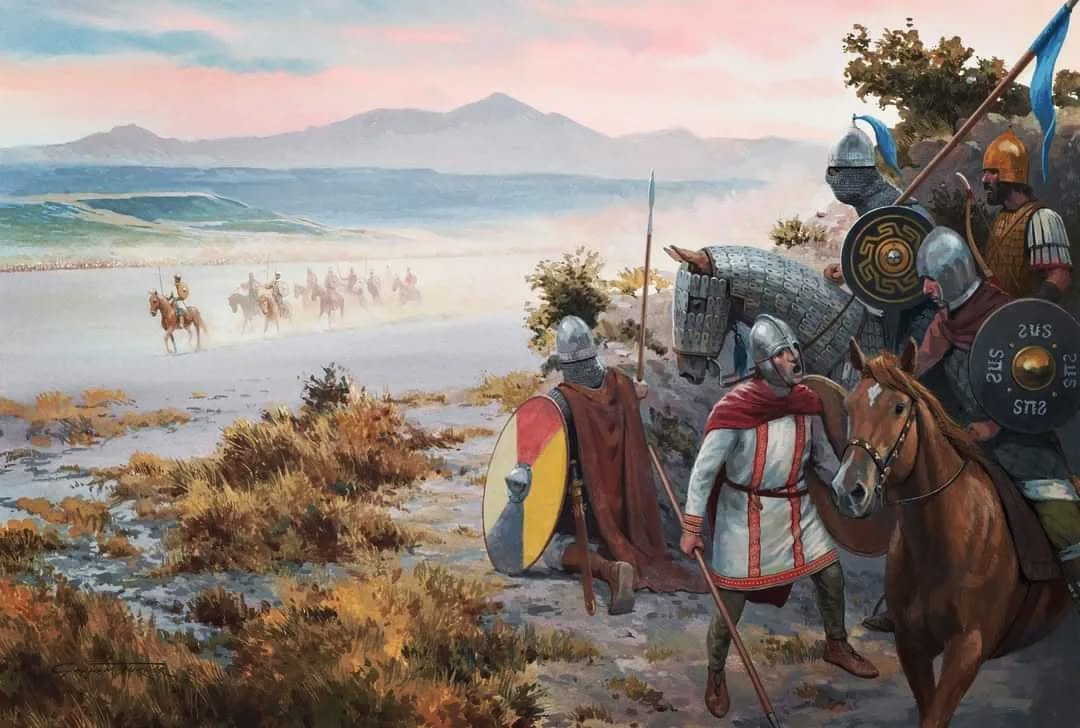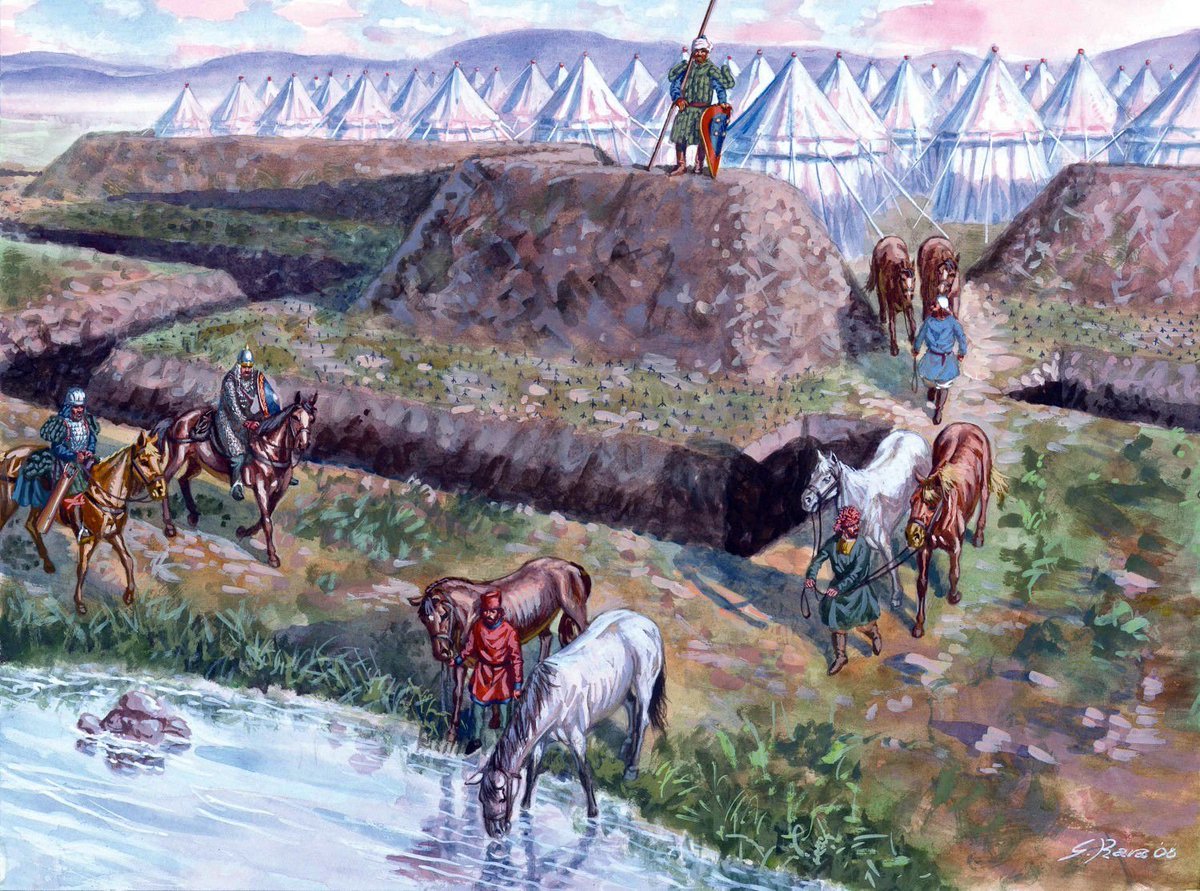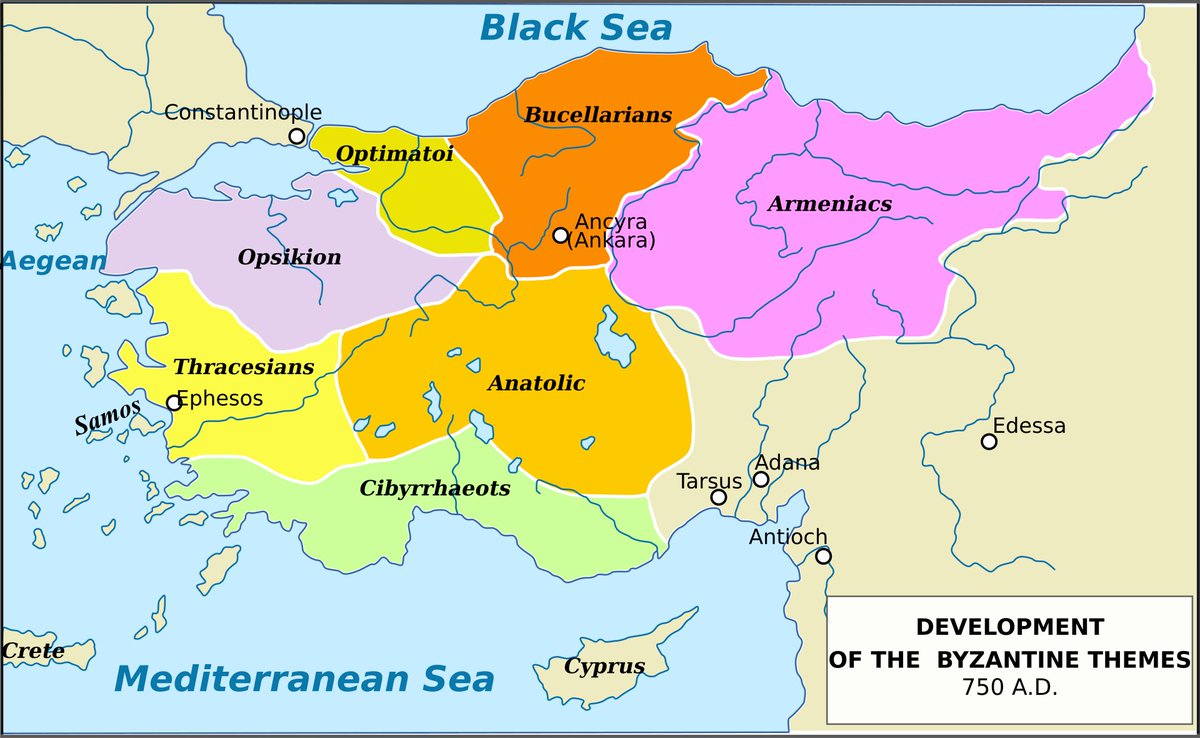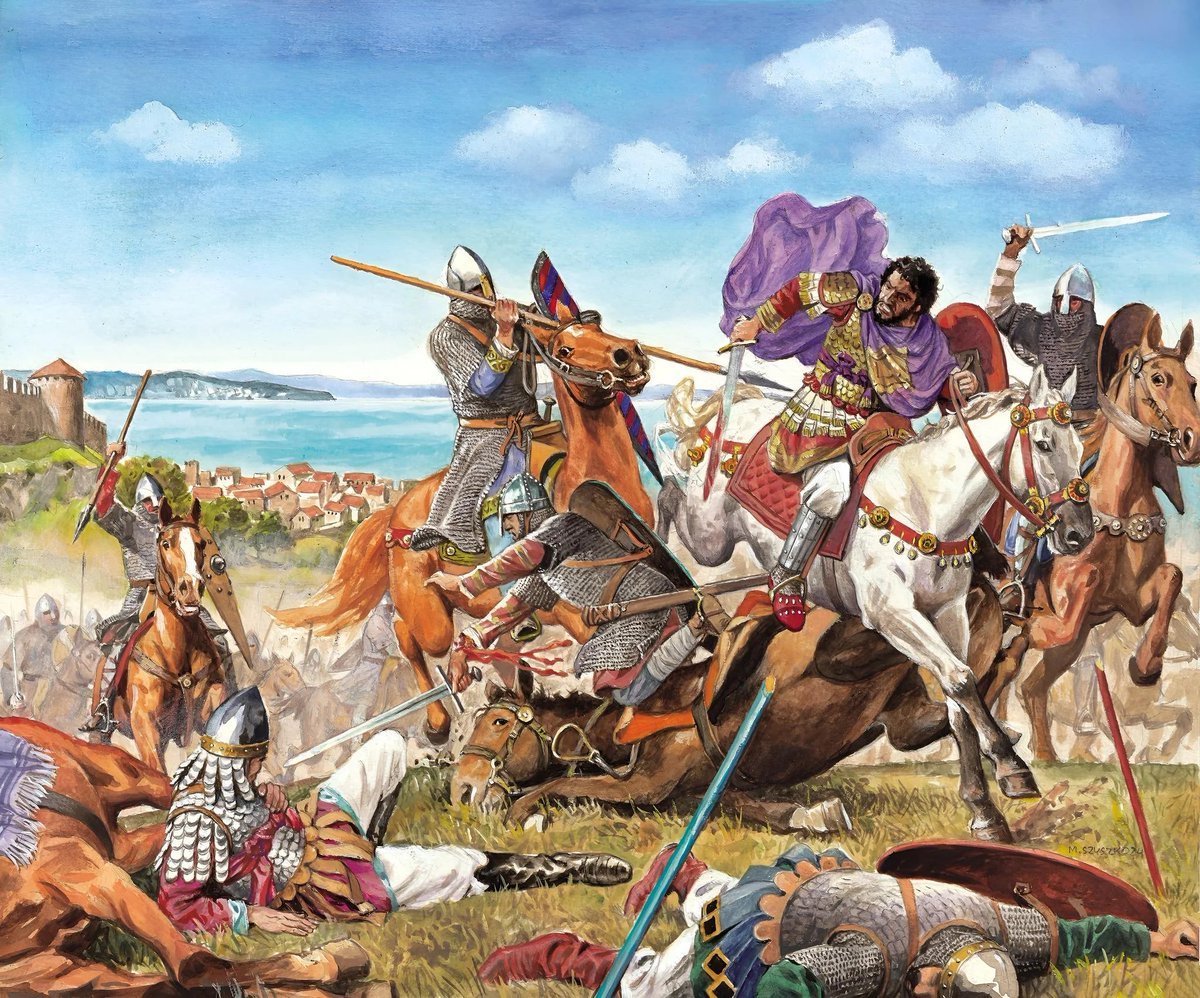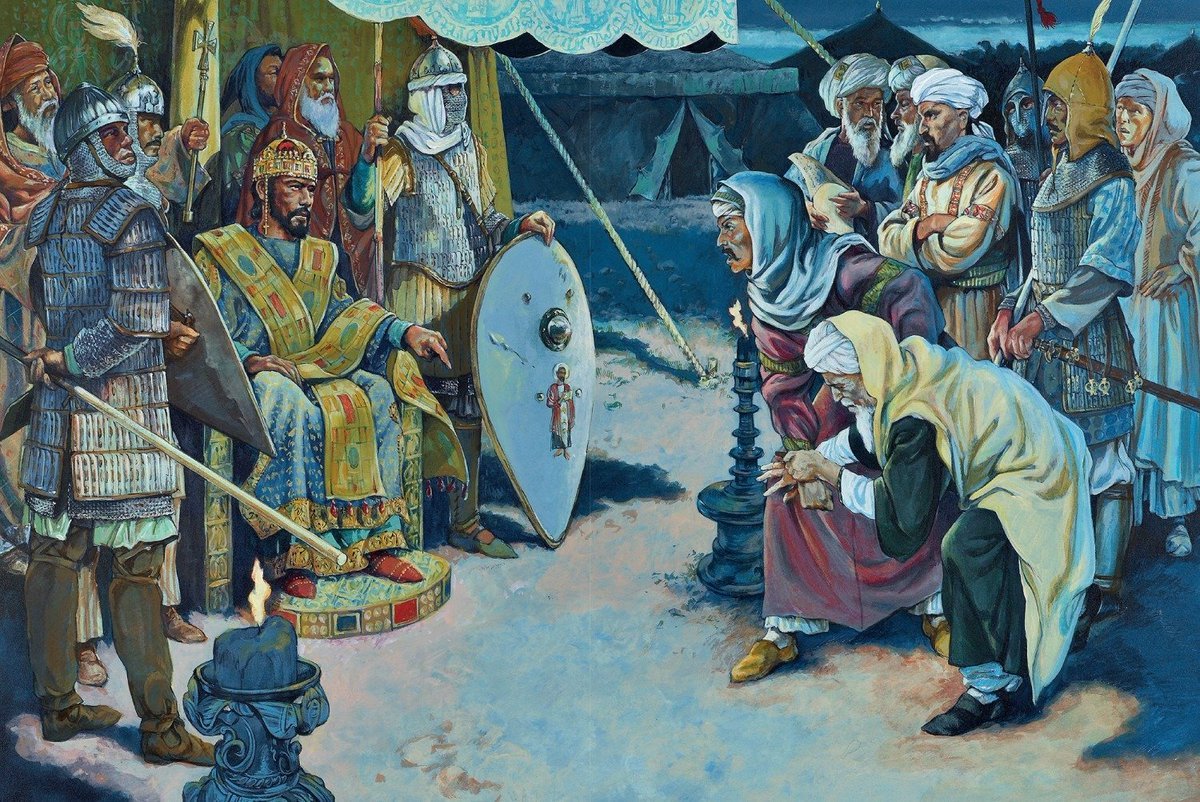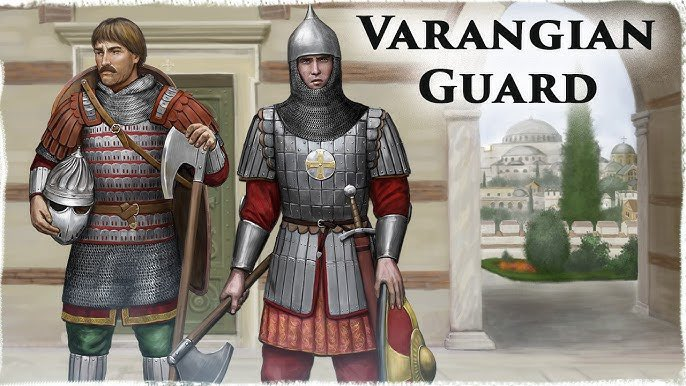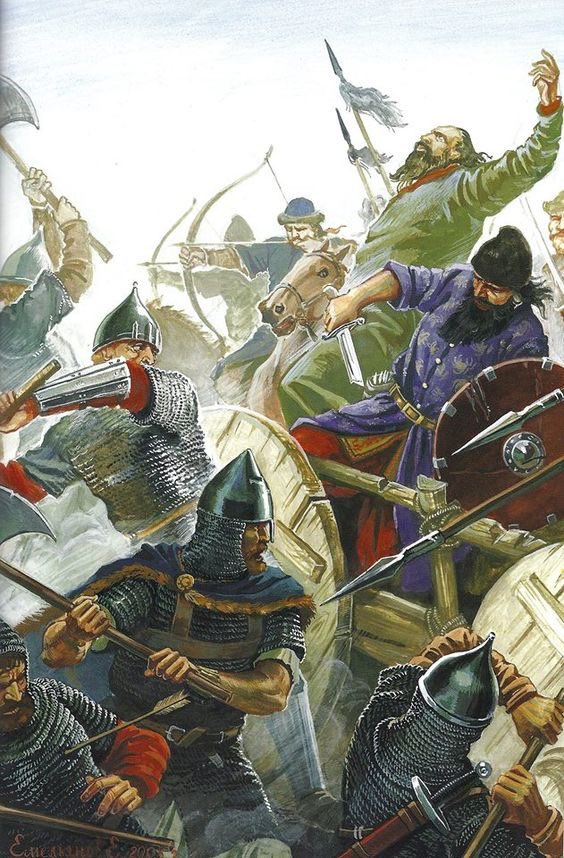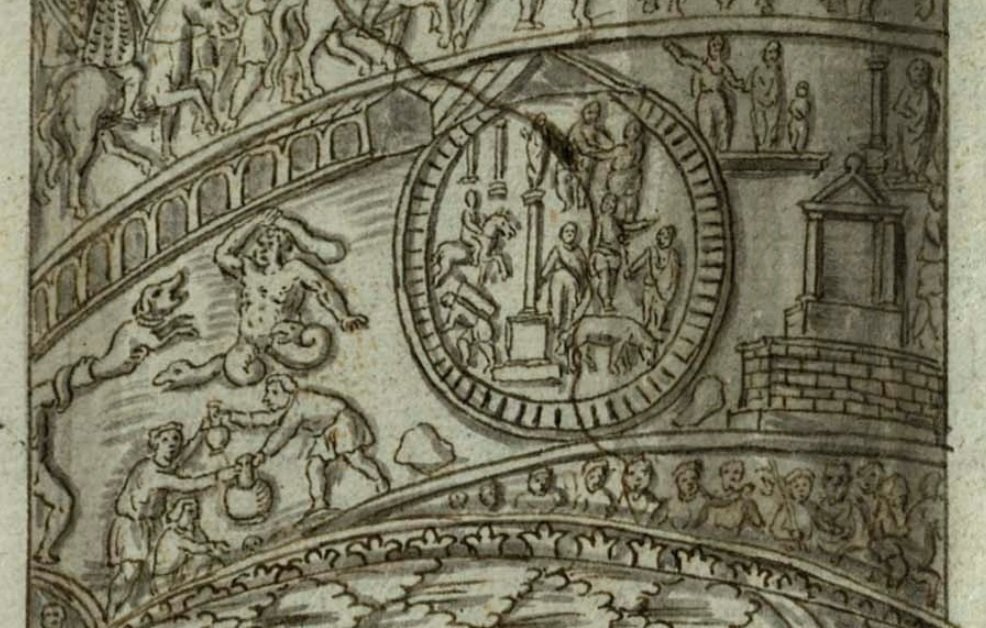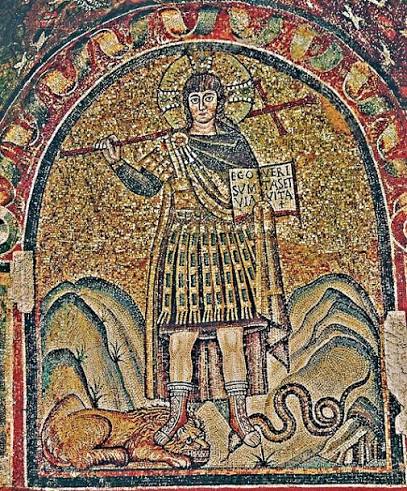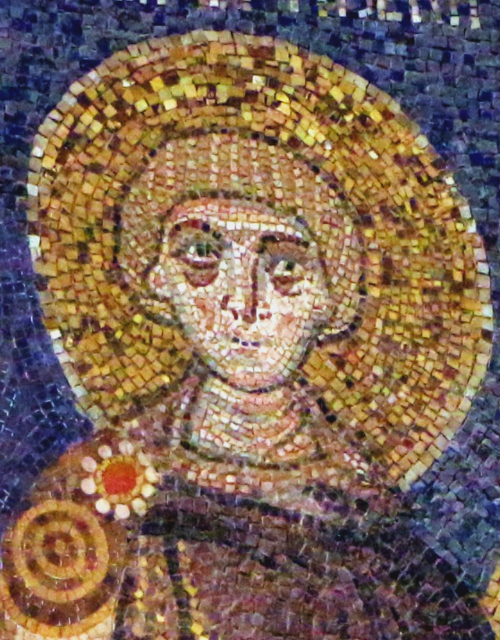As a huge #Tolkien fan, I am amazed at how many artists brought his Middle Earth to life.
Alan Lee, Ted Nasmith, Marc Simonetti, and even the Queen of Denmark!
But my favourite is Denis Gordeev, a Russian who made Tolkien's characters and world truly medieval (and real).
Alan Lee, Ted Nasmith, Marc Simonetti, and even the Queen of Denmark!
But my favourite is Denis Gordeev, a Russian who made Tolkien's characters and world truly medieval (and real).

Just look at the vibrant world and colourful costumes of the Gordeev medieval #LOTR characters. We should remember the Middle Ages were a far cry from Holywood's drab and grey world.
Filled with colours, like in this scene of Aragorn's coronation. A crown for the king! /1
Filled with colours, like in this scene of Aragorn's coronation. A crown for the king! /1

Or look at the chaos of the Fall of Gondolin (Gordeev illustrated all Tolkien's books), with wrym employed as a sort of siege weapon while Turgon is wearing full battle regalia. Majestic, isn't it? /2 

Gordeev is also a master of human emotion. Check this tragic scene of Faramir brought to his father, Denethor! With the silent royal marble statues observing the unfolding drama. /3 

Or light (and shadow). Like in this case where Legolas and Gimli are riding to fight the forces of Darkness. Just look at that contrast between forces of good and evil /4 

A whole story in one illustration. Eowyn, the maid of Rohan, confronts the Witch King, with Merry helplessly watching and King Theoden stuck under his horse! While the battle rages on... /5 

Or probably the best scene I have ever seen depicting the collapse (literally) of the fortress of Barad Dur
You can almost imagine this scene in motion. /6
You can almost imagine this scene in motion. /6

And ofcourse romance. Faramir and Eowyn enjoyed their sweet victory. Such an innocent but also passionate kiss. /7 

Not all illustrations are in colour. But B&W does not change the power of Geordeev's art. Arwen looked as elegant as ever, and Aragorn dressed simply, but every detail pointed to his royalty. /8 

Those are just a few of the many beautiful illustrations by which this talented artist brought Tolkien's world to life. He also did some of the best art for #TheWitcher, so when you have time, do a bit of Google search. You'll be rewarded. :) /9






Ok, will break with my custom and share few more fascinating art
Shadowfax - the lord of all horses, looking fabulous and not impressed
Frodo on Glorfindel horse
Sam telling Faramir to go to...
And, ofcourse...They are taking the hobbits to Isengard :)




Shadowfax - the lord of all horses, looking fabulous and not impressed
Frodo on Glorfindel horse
Sam telling Faramir to go to...
And, ofcourse...They are taking the hobbits to Isengard :)




• • •
Missing some Tweet in this thread? You can try to
force a refresh


